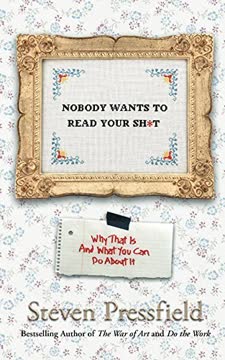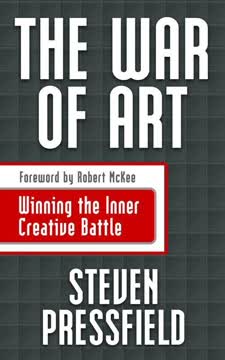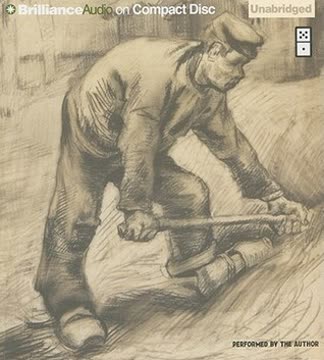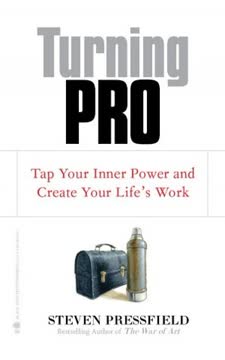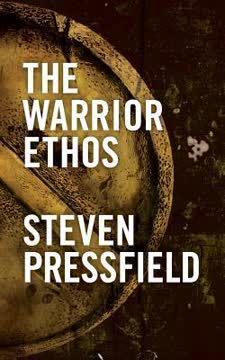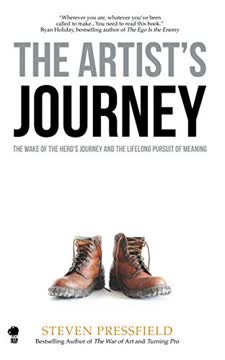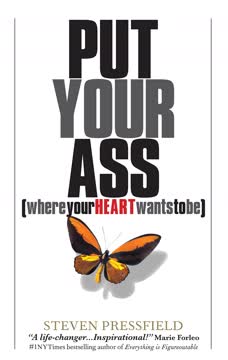Key Takeaways
1. Nobody Wants to Read Your Sh*t: Embrace the Reader's Perspective
When you understand that nobody wants to read your shit, your mind becomes powerfully concentrated.
Reader-centric approach. The core message is that readers are busy and indifferent to your work. This understanding forces you to focus on delivering value, entertainment, or information that justifies their time and attention. It's about empathy and recognizing the transaction between writer and reader.
Writing as a transaction. Writing is a transaction where the reader donates their valuable time and attention. In return, the writer must provide something worthwhile. This could be entertainment, information, insight, or emotional connection.
Shift in perspective. By adopting the reader's point of view, you can ask yourself, "Is this interesting? Is it fun or challenging or inventive? Am I giving the reader enough?" This constant self-assessment ensures that your writing remains engaging and relevant.
2. Advertising Principles: Concepts Over Ads
The first thing you learn in advertising is that no one wants to read your shit.
Ads are unwelcome. People generally dislike ads and commercials. Therefore, advertising must be ingenious to capture attention and sell the product. This requires a shift from simply creating ads to developing comprehensive campaigns.
Campaigns over individual ads. A strong campaign concept can spawn numerous individual ads, each reinforcing the overall theme. The concept should be big enough to generate multiple executions, creating a cohesive and impactful message.
Nike's example. Nike's "Be Like Mike" campaign, featuring Michael Jordan, is a prime example. The concept was powerful enough to drive countless ads and commercials, all centered around the idea of aspiring to be like the basketball legend.
3. Concept is King: The Foundation of Great Art
A concept establishes a frame of reference that is greater than the product itself.
Beyond slogans. A concept is more than just a catchy slogan. It's a framework that reframes the issue and makes the product or idea compelling. It takes a conventional claim and puts a spin on it, establishing a broader context.
Avis's example. Avis's "We're number two, so we try harder" campaign turned a negative into a positive. It reframed the issue of car rental companies by suggesting that Avis provides better service because they work harder to catch Hertz.
Concepts in art and politics. Concepts are essential in all forms of art and communication. Every work of art, from the Sistine Chapel to the Golden Gate Bridge, is founded on a concept. Similarly, political slogans like "Death Panels" or "Job Creators" are powerful concepts that shape public opinion.
4. Steal Like an Artist: Borrow, Adapt, and Innovate
Kid, it ain’t stealing if you put a spin on it.
Inspiration vs. imitation. In advertising, it's common to draw inspiration from existing layouts and designs. The key is to adapt and reinterpret the source material, adding your own unique spin to create something new and original.
Zoltan Medvecky's lesson. The author learned this lesson from an art director named Zoltan Medvecky, who openly "stole" layouts from magazines and photography books. Medvecky emphasized that it's not stealing if you put your own twist on it.
Reconceiving and borrowing. The process involves taking a straightforward look and reconceiving it, borrowing aspects that possess gravity and that no one else has used in an ad, to reinforce the impression you want to convey.
5. The Power of Problems: Define, Then Solve
Great solution.
Assignments as problems. In advertising, assignments are viewed as "problems" that need to be solved. The goal is to come up with a creative solution that addresses the client's specific needs and challenges.
Samsung vs. Apple. A typical problem might be: "Our client, Samsung's smartphone, is technically superior to Apple's iPhone, but Apple's hip design and customer loyalty are killing us. How can we turn the tables and make Samsung hip?"
Defining the problem. The first step in finding a solution is to clearly define the problem. This involves understanding the underlying issues and identifying the key challenges that need to be addressed.
6. Three-Act Structure: The Universal Storytelling Blueprint
Break the piece into three parts – beginning, middle, and end.
Essential for movies. The three-act structure is essential for movies and plays because they are experienced in one continuous block of time. The writer must keep the audience riveted for the duration of the performance.
Hook, build, payoff. The three acts correspond to the hook, build, and payoff. Act One introduces the characters and sets the stage. Act Two builds tension and complications. Act Three resolves the conflict and delivers the climax.
Universal principle. The three-act structure is a universal principle that applies to all forms of storytelling, from jokes to seductions. It's a fundamental framework for creating compelling narratives.
7. Genre Matters: Know the Rules to Break Them
Every film and novel and play falls into a genre, and every genre has its own ironclad, unbreakable rules.
Genre conventions. Every genre has its own set of conventions and expectations. These conventions are not formulas, but rather established patterns that resonate with audiences.
Understanding the rules. The writer must know the rules of the genre they're working in, just as a bridge builder must understand the science of foundations and structural integrity. This knowledge allows them to effectively meet or subvert expectations.
Soul-level connection. Stories connect with audiences on a soul level. The soul judges a story's truth by how closely it comports to narrative templates that are part of our psyche from birth.
8. The Hero's Journey: A Map for the Soul
The Hero’s Journey is the Ur-Story of every individual from Adam and Eve to Ziggy Stardust.
Universal pattern. The Hero's Journey is a universal pattern that underlies virtually every story, from ancient myths to modern movies. It's a roadmap for personal transformation and growth.
Key stages. The Hero's Journey typically involves:
- A call to adventure
- Meeting a mentor
- Crossing a threshold into a special world
- Facing trials and tribulations
- Confronting the villain
- Returning home transformed
Psychological significance. The Hero's Journey is not just a storytelling device, but a reflection of the human psyche. It's a template that helps us navigate our own lives and make sense of our experiences.
9. Every Story Must Be About Something: Theme is Paramount
Every work that works is undergirded by a theme.
Theme as the foundation. A successful story is always about something. Beneath the surface of plot and character, there must be a central theme that holds the work together and gives it meaning.
Theme in Breaking Bad. In "Breaking Bad," the theme is transformation. Every episode and scene revolves around the idea of change, as Walter White transforms from a mild-mannered teacher into a ruthless drug lord.
Defining the problem. When a story isn't working, it's often because the theme is unclear. Defining the theme helps to clarify the story's purpose and guide the writer's decisions.
10. Write for a Star: Create Unforgettable Characters
The audience wants to see a star.
Star power. In Hollywood, a script is nothing until it attracts a star. Therefore, writers must create roles that are worthy of a star's talent and charisma.
Qualities of a star role:
- The character's issues drive the story.
- The character's desire is monumental.
- The character's passion is unquenchable.
- The character's actions dictate the story's turns.
- The story ends when the character's issues are resolved.
Internal journey. A star wants an interior arc as well. The character must undergo a radical change from the start of the film to the finish. She must evolve.
11. Non-Fiction is Fiction: Structure Truth Like a Story
When you work with fact, treat it as fiction.
Applying storytelling principles. Even in non-fiction, it's essential to apply the principles of storytelling. This means giving the work a beginning, middle, and end, a hero and villain, and a clear theme.
Organizing the material. Structure your non-fiction work as if it were a novel. Create a narrative arc that builds to a climax and resolves the conflict in terms of the theme.
Engaging the reader. By using storytelling techniques, you can make your non-fiction work more engaging and memorable. This will help you to capture and hold the reader's attention.
12. The Long Game: Writing a Novel is a Marathon, Not a Sprint
A novel will take you two years to write. Or three or four or five.
Commitment and endurance. Writing a novel is a long-term commitment that requires dedication, perseverance, and self-motivation. It's a marathon, not a sprint.
Maintaining motivation. You must be able to sustain your motivation, self-belief, and sanity over the course of several years. This requires a strong sense of purpose and a deep connection to the material.
Embrace the journey. Writing a novel is an adventure that will change you. You must be willing to immerse yourself in the story and let it take you where it needs to go.
Last updated:
FAQ
1. What is "Nobody Wants to Read Your Sh*t" by Steven Pressfield about?
- Core Premise: The book is a candid, practical guide for writers and creators, emphasizing that audiences are not inherently interested in your work—you must earn their attention.
- Author’s Journey: Pressfield shares lessons from his diverse writing career, including advertising, screenwriting, fiction, and nonfiction, to illustrate universal storytelling principles.
- Actionable Advice: The book offers concrete strategies for making your writing compelling, clear, and valuable to readers.
- Empathy for the Reader: Pressfield stresses the importance of understanding the reader’s perspective and delivering something meaningful in exchange for their time.
2. Why should I read "Nobody Wants to Read Your Sh*t" by Steven Pressfield?
- Brutally Honest Guidance: The book dispels romantic myths about writing and provides a reality check for aspiring and working writers.
- Applicable Across Genres: Whether you write ads, novels, screenplays, or nonfiction, Pressfield’s principles apply universally.
- Empowering Mindset Shift: It helps writers develop empathy, humility, and a professional approach to their craft.
- Practical Tools: Readers gain actionable frameworks for structuring stories, developing concepts, and revising their work for maximum impact.
3. What are the key takeaways from "Nobody Wants to Read Your Sh*t"?
- Nobody Cares—Earn Attention: The world isn’t waiting for your work; you must make it irresistible and valuable.
- Storytelling is Transactional: Writing is a transaction where the reader gives time and attention, and the writer must deliver value in return.
- Structure Matters: Every piece of writing, from ads to novels, benefits from clear structure—hook, build, payoff.
- Empathy and Revision: Success comes from understanding the reader’s needs and relentlessly revising to serve them.
4. What does Steven Pressfield mean by "Nobody Wants to Read Your Sh*t"?
- Literal and Metaphorical: He means that readers are busy, indifferent, and not obligated to care about your work.
- School vs. Real World: Unlike in school, where teachers must read your writing, in the real world, no one is waiting for your words.
- Earned Interest: You must craft your message to be so compelling, clear, and entertaining that people choose to engage.
- Empathy as a Skill: Recognizing this truth helps writers develop empathy and focus on delivering value.
5. What is the "concept" in writing, according to "Nobody Wants to Read Your Sh*t"?
- Definition of Concept: A concept is a unique, original framing or twist that makes your material stand out and gives it meaning beyond the obvious.
- Examples Provided: Pressfield cites ad campaigns like “A diamond is forever” and stories like "Die Hard" as high-concept examples.
- Application Across Forms: Every work—ad, novel, movie, or speech—should have a strong concept to anchor and differentiate it.
- Concept vs. Slogan: A concept is more than a catchy phrase; it reframes the material and makes it compelling.
6. How does Steven Pressfield define and use "theme" in "Nobody Wants to Read Your Sh*t"?
- Theme as Core Meaning: The theme is the underlying idea or message that gives a story coherence and emotional resonance.
- Theme vs. Concept: While the concept is external (the unique angle), the theme is internal (the work’s deeper meaning).
- Guiding Principle: Every scene, character, and plot point should serve the theme, ensuring the work is “about something.”
- Examples: Pressfield uses works like "Hamlet" and "The Godfather" to illustrate how strong themes unify great stories.
7. What storytelling structure does "Nobody Wants to Read Your Sh*t" recommend?
- Three-Act Structure: Pressfield advocates for the classic three-act structure—beginning (hook), middle (build), and end (payoff).
- Inciting Incident: Every story must have an inciting incident that sets the narrative in motion.
- Climax Embedded Early: The climax should be foreshadowed or embedded in the inciting incident.
- Adaptable to All Forms: This structure applies to ads, movies, novels, nonfiction, and even self-help books.
8. How does "Nobody Wants to Read Your Sh*t" advise writers to create compelling characters?
- Characters Embody Theme: Every major character should represent an aspect of the story’s theme or counter-theme.
- Write for a Star: In fiction and film, create protagonists with scale, depth, and an arc worthy of a “star” actor or unforgettable literary figure.
- Villains Matter: The antagonist should be as strong and interesting as the hero, often delivering a “brilliant villain speech.”
- Suffering and Change: Great characters undergo significant suffering and transformation, making their journey emotionally engaging.
9. What is the role of "genre" and "conventions" in "Nobody Wants to Read Your Sh*t"?
- Genre as Blueprint: Every story falls into a genre, each with its own conventions and expectations.
- Know the Rules: Writers must understand and respect genre conventions before attempting to subvert or blend them.
- Audience Expectations: The human psyche is wired to respond to familiar narrative patterns (e.g., the Hero’s Journey).
- Examples: Pressfield references Westerns, detective stories, and love stories to show how conventions guide structure and audience satisfaction.
10. How does "Nobody Wants to Read Your Sh*t" apply storytelling principles to nonfiction and self-help?
- Nonfiction as Story: Even factual works should be structured like stories, with a concept, theme, hero, villain, and climax.
- Narrative Device: Choose a narrative voice or device that aligns with the theme and engages the reader.
- Hook, Build, Payoff: Organize nonfiction and self-help books into a three-act structure for maximum impact.
- Authority and Empathy: Establish credibility through voice, experience, and genuine concern for the reader’s needs.
11. What are Steven Pressfield’s most actionable tips for writers from "Nobody Wants to Read Your Sh*t"?
- Start at the End: Know your climax and work backward to set up every necessary element.
- Cut Ruthlessly: Remove everything that isn’t on-theme or doesn’t serve the reader.
- Think in Drafts: Expect to write multiple drafts; don’t try to get everything perfect in one go.
- Surrender to the Material: Let the story or subject guide you, rather than forcing your ego or agenda onto it.
12. What are the best quotes from "Nobody Wants to Read Your Sh*t" and what do they mean?
- “Nobody wants to read your sh*t.” – The foundational truth: you must earn the reader’s attention and interest.
- “Writing, reading is above all, a transaction.” – The reader gives time and attention; the writer must give value in return.
- “A real writer or artist or entrepreneur has something to give.” – The focus should be on serving the audience, not self-indulgence.
- “Start at the end.” – Know your destination (climax) before you begin, so every part of your work builds toward it.
- “Surrender to the material.” – Let the work become what it wants to be, rather than imposing your will on it.
Review Summary
Nobody Wants to Read Your Sh*t receives mostly positive reviews for its concise, no-nonsense advice on writing. Readers appreciate Pressfield's candid style and practical tips drawn from his diverse writing experiences. Many find it a quick, inspiring read with valuable insights into storytelling and the creative process. Some criticize its brevity and basic content, feeling it lacks depth. The book's unconventional structure and occasional typos are noted. Overall, it's recommended for aspiring writers seeking motivation and a straightforward approach to improving their craft.
Similar Books
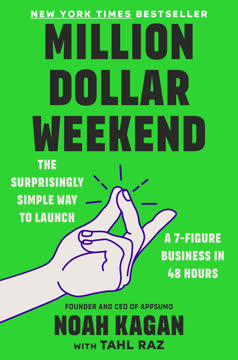
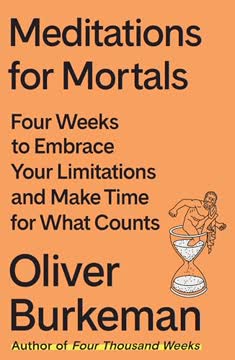
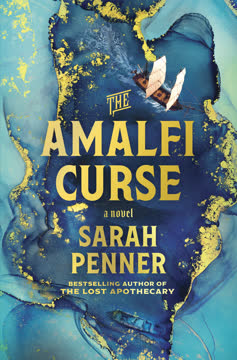
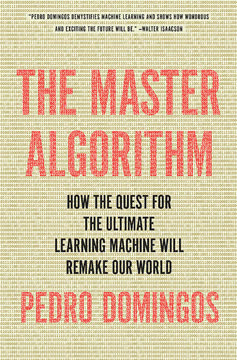
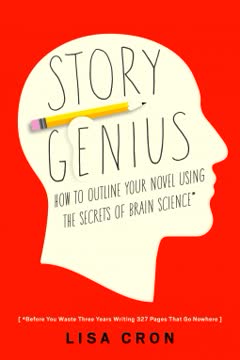
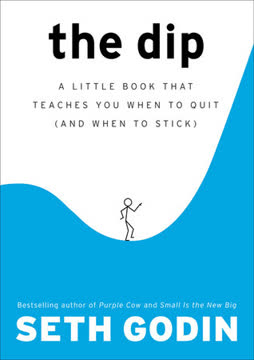
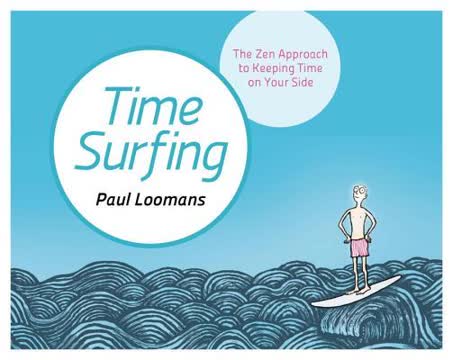
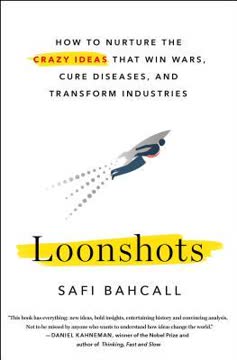
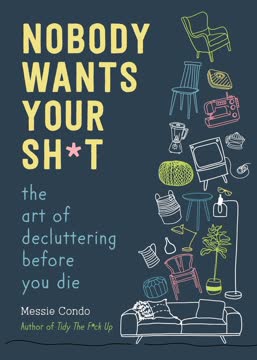
Download PDF
Download EPUB
.epub digital book format is ideal for reading ebooks on phones, tablets, and e-readers.
